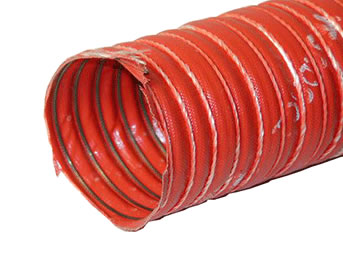
Ducting isn’t limited to residential heating, ventilation and cooling (HVAC) systems. It’s used in many other industries, including aviation. Consisting of hollow and semi-flexible tubes or conduits, it’s responsible for guiding air. How is ducting used in airplanes exactly?
Climate Control
Airplanes use ducting as part of their climate-control systems. During the early years of aviation, airplanes didn’t have climate-controlled cabins. It wasn’t until the late 1930s that the first commercial flight with an air-conditioned cabin emerged. Since then, however, nearly all commercial flights have air-conditioned, as well as warmed, climates. Ducting is used to guide the cool or warm air into and throughout an airplane’s cabin.
Engine Bleed Air
Bleed air systems rely on ducting as well. Bleed air is excess, unused air from an engine intake. Jet engines, such as turbofans, work by burning a mixture of fuel and air. Rather than burning all of the air they receive via an intake, though, they bleed off a small amount of air so that it can be used for other purposes. Airplanes typically use ducting to guide this bleed air to other areas.
Deicing Systems
Another common use for ducting in airplanes is deicing systems. Ice is a concern for airplanes. At 35,000 feet, the temperature of the range may range from minus 40 degrees Fahrenheit to minus 60 degrees Fahrenheit. Any water or condensation on the body of an airplane will quickly freeze and turn to ice. Fortunately, airplanes today are equipped with deicing systems to melt any accumulated ice. Some deicing systems use heated wires, whereas others use ducting to blow hot air over problematic areas of the airplane’s body.
Window Defogging
Some airplanes use ducting for window defogging. Just like the windows in a car can fog up, so can an airplane’s windows. This phenomenon occurs when there’s a notable temperature difference between the air inside of an aircraft or vehicle and the air outside of an aircraft or vehicle. For pilots, fogged-up windows can restrict visibility while subsequently posing a hazard. Therefore, cockpit windows often have a defogging system. Some defogging systems use ducting to blow warm air over cockpit windows.
Exhaust Air
Airplanes use ducting to remove exhaust air as well. Exhaust gases are the byproduct of combustion. Combustion-driven engines produce hot exhaust gases after burning fuel and air. This air must be safely vented, which is where ducting comes into play. Ducting serves as a conduit by guiding exhaust air to the appropriate area.



